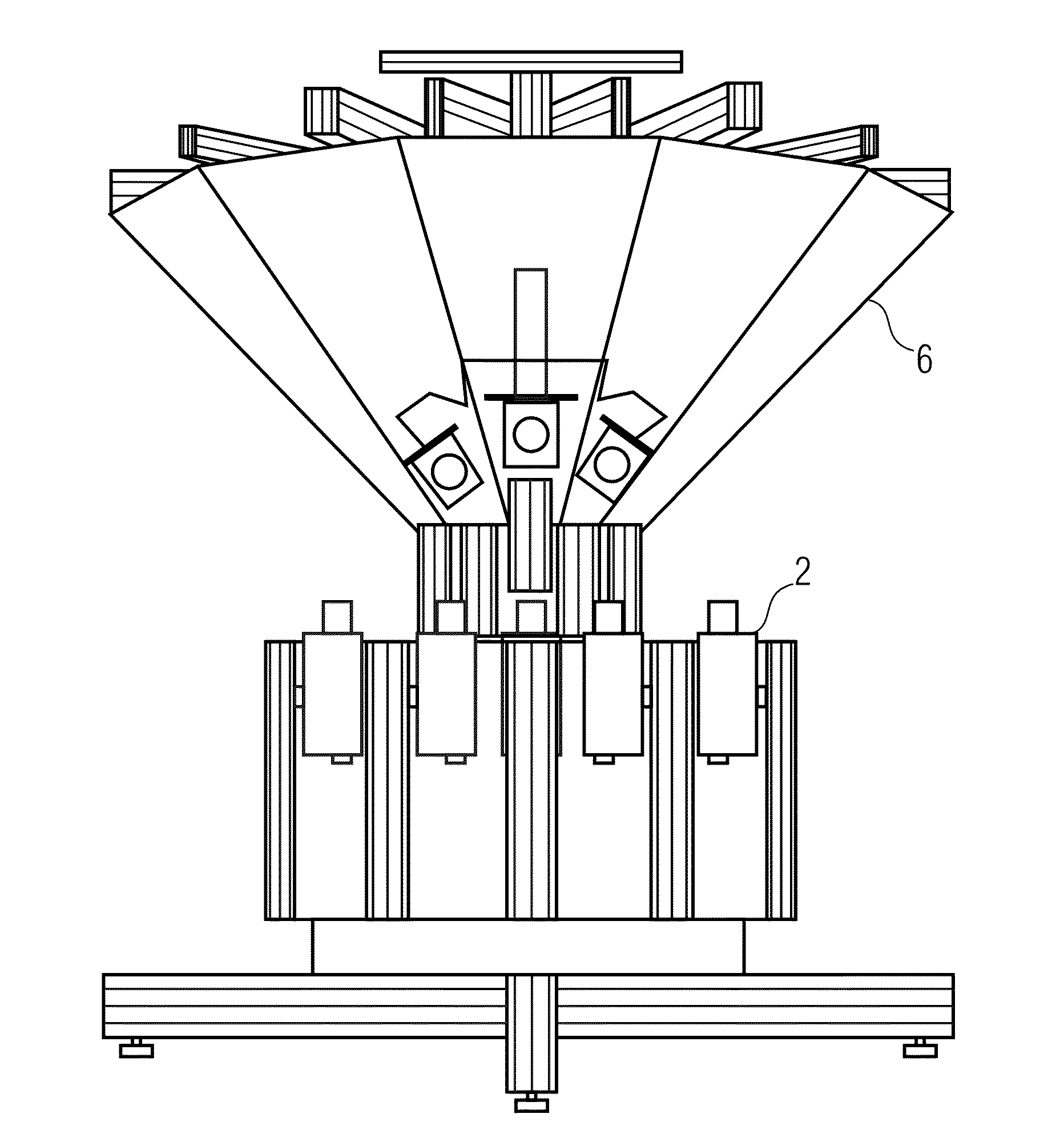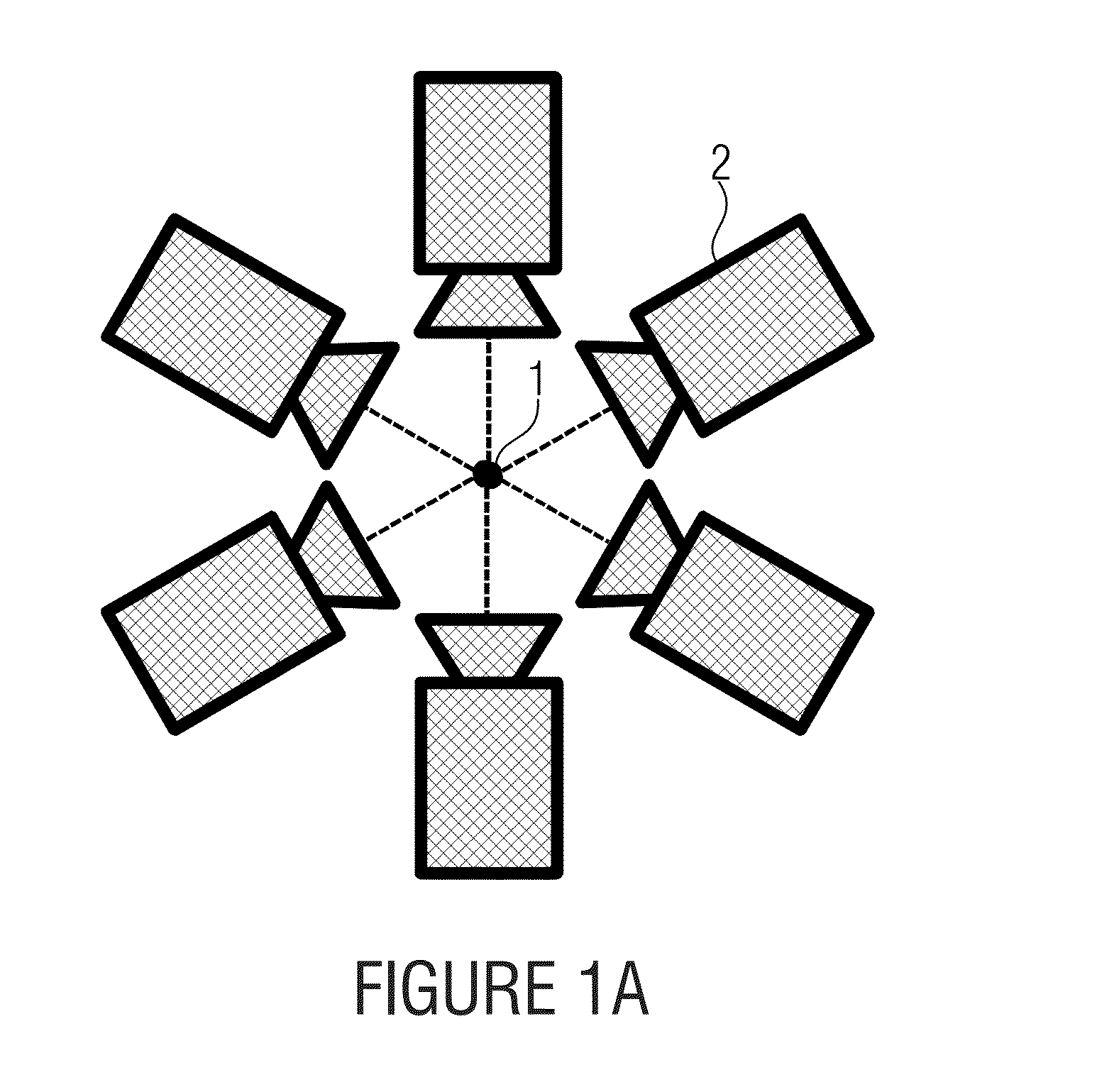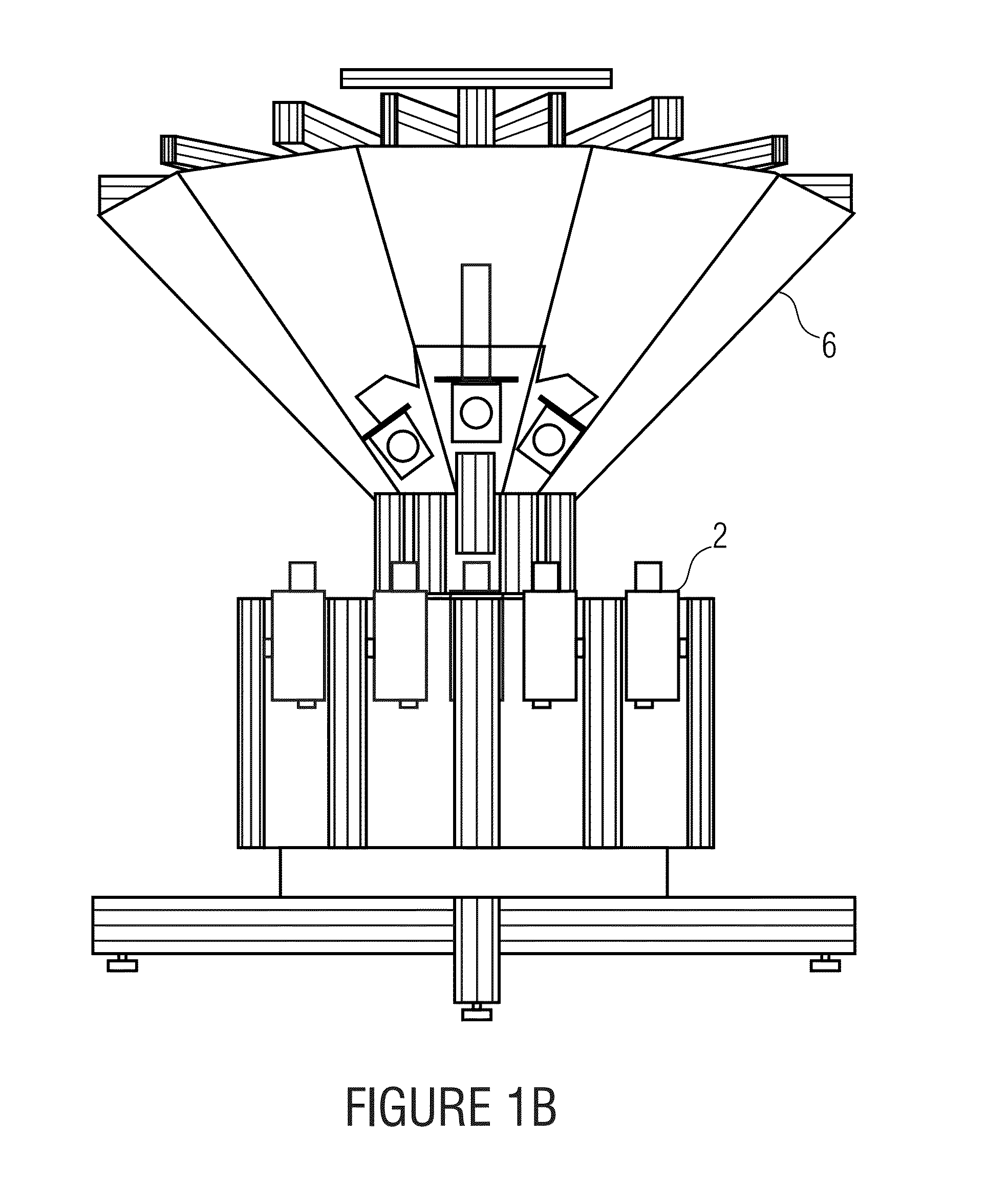Capturing panoramic or semi-panoramic 3D scenes
- Summary
- Abstract
- Description
- Claims
- Application Information
AI Technical Summary
Benefits of technology
Problems solved by technology
Method used
Image
Examples
Embodiment Construction
[0045]Whenever the same reference signs occur in the Figures, the explanation of the elements indicated using these reference signs presented with respect to one Fig. shall equally apply to the other figures where the same reference sign occurs, except for deviations explicitly mentioned.
[0046]FIGS. 6A, 6B, 6C, and 6D show an apparatus for capturing panoramic or semi-panoramic 3D scenes. The apparatus comprises a mirror 10 the surface of which is rotationally symmetric about an axis 12 and is a combination of tilted mirror plane surfaces 10a, 10b and 10c (segments), the normal vectors 13 of which each intersects the axis 12 and has the same angle β relative to a plane perpendicular to axis 12. In other words, the overall mirror surface of mirror 10 resulting from the combination of mirror plane surfaces 10a, 10b and 10c results in a pyramid or a clipped pyramid having a polygonal base which may be, but is not necessarily, regular.
[0047]Further, the apparatus comprises a plurality of...
PUM
 Login to View More
Login to View More Abstract
Description
Claims
Application Information
 Login to View More
Login to View More - R&D
- Intellectual Property
- Life Sciences
- Materials
- Tech Scout
- Unparalleled Data Quality
- Higher Quality Content
- 60% Fewer Hallucinations
Browse by: Latest US Patents, China's latest patents, Technical Efficacy Thesaurus, Application Domain, Technology Topic, Popular Technical Reports.
© 2025 PatSnap. All rights reserved.Legal|Privacy policy|Modern Slavery Act Transparency Statement|Sitemap|About US| Contact US: help@patsnap.com



